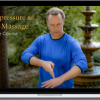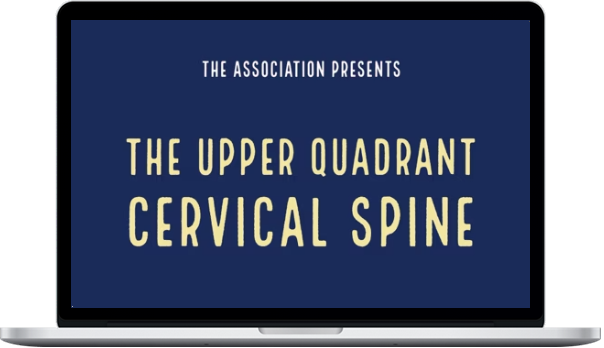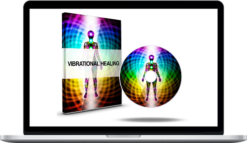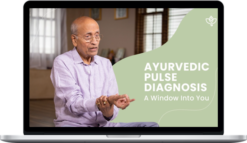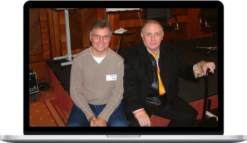NAIOMT – Upper Quadrant – Part 1 – Cervical Spine
$45.00 $18.00
Total Sold: 1
»Instant Delivery
Description
NAIOMT – Upper Quadrant – Part 1 – Cervical Spine
The Association of Ann Porter Hoke, Bill Temes and Kent Keyser present various evaluation and treatment techniques for the cervical spine. These complement techniques demonstrated in the C-516 Cervical I and C-616 Cervical II courses through NAIOMT.
What You’ll Learn In Upper Quadrant – Part 1 – Cervical Spine
- 2. Upper Quadrant – Cervical – D1 – 02 – Cervical Fracture Screen and Observation 03:16
- 3. Upper Quadrant – Cervical – D1 – 03 – Cranial Nerve Screen 07:40
- 4. Upper Quadrant – Cervical – D1 – 04 – Summary of VBI and CAD Screen and Clinical Reasoning 02:18
- 5. Upper Quadrant – Cervical – D1 – 05 – Basic Dizziness Screening 05:38
- 6. Upper Quadrant – Cervical – D1 – 06 – VBI Testing Sequence 06:45
- 7. Upper Quadrant – Cervical – D1 – 07 – Summary of VBI and CAD Screen and Clinical Reasonin 03:04
- 8. Upper Quadrant – Cervical – D1 – 08 – Seated Upper Cervical Stability Tests 02:37
- 9. Upper Quadrant – Cervical – D1 – 09 – Selective Tissue Tension Testing Upper Cervical Region 02:54
- 10. Upper Quadrant – Cervical – D1 – 10 – Combined WB Passive Motions 01:50
- 11. Upper Quadrant – Cervical – D1 – 11 – Palpation anterior lateral neck and posterior suboccipital 05:07
- 12. Upper Quadrant – Cervical – D1 – 12 – Supine Stability Testing – Plastic Model 04:40
- 13. Upper Quadrant – Cervical – D1 – 13 – Supine Stability Testing – Live Model 04:22
- 14. Upper Quadrant – Cervical – D1 – 14 – Supine OA Segmenal Moblity Testing and Mobilization 06:40
- 15. Upper Quadrant – Cervical – D1 – 15 – Supine AA Segmental Mobility Testing and Mobilization 08:23
- 16. Upper Quadrant – Cervical – D1 – 16 – Seated Segmental Traction 03:32
- 17. Upper Quadrant – Cervical – D1 – 17 – Supine or Sidelying Segmental Traction 03:43
- 18. Upper Quadrant – Cervical – D1 – 18 – Supine OA Segmenal Moblity Testing and Mobilization 04:36
- 19. Upper Quadrant – Cervical – D1 – 19 – Supine AA Segmenal Moblity Testing and Mobilization 03:52
- 20. Upper Quadrant – Cervical – D1 – 20 – Supine Segmental OA and AA Mobilization Techniques 04:59
- 21. Upper Quadrant – Cervical – D1 – 21 – Muscular Soft Tissue Techniques 03:15
- 22. Upper Quadrant – Cervical – D1 – 22 – Calming Techniques and Management of Non-Acute Adverse Reaction 02:45
- 23. Upper Quadrant – Cervical – D1 – 23 – TMJ – History and Systems Review 00:48
- 24. Upper Quadrant – Cervical – D1 – 24 – TMJ Observation 00:48
- 25. Upper Quadrant – Cervical – D1 – 25 – STTT of the TMJ 05:06
- 26. Upper Quadrant – Cervical – D1 – 26 – External Palpation of TMJ Motion 03:16
- 27. Upper Quadrant – Cervical – D1 – 27 – Seated Extra-Oral and Intra-Oral Muscle Palpation 01:48
- 28. Upper Quadrant – Cervical – D1 – 28 – Seated TMJ Assessment – Traction and Glide 04:11
- 29. Upper Quadrant – Cervical – D1 – 29 – Supine Extra-Oral and Intra-Oral Muscle Palpation 03:30
- 30. Upper Quadrant – Cervical – D1 – 30 – Supine Extra-Oral and Intra-Oral Traction 01:04
- 31. Upper Quadrant – Cervical – D1 – 31 – Basic Muscle Re-Education 02:07
- 32. Upper Quadrant – Cervical – D1 – 32 – Intra-Oral Skeletal Landmarks 01:43
- 33. Upper Quadrant – Cervical – D2 – 01 – Disclaimer 01:09
- 34. Upper Quadrant – Cervical – D2 – 02 – History System Review and Scan Overview 01:45
- 35. Upper Quadrant – Cervical – D2 – 03 – Mid Cervical Scan – Observation 01:47
- 36. Upper Quadrant – Cervical – D2 – 04 – Screening for Myelopathy and Radiculopathy 01:45
- 37. Upper Quadrant – Cervical – D2 – 05 – Tests for Radicular Pain-Spurlings Traction, Neurodynamic Testing 06:26
- 38. Upper Quadrant – Cervical – D2 – 06 – Cervical Bony and Soft Tissue Palpation 17:13
- 39. Upper Quadrant – Cervical – D2 – 07 – Tests for Hypomobility-PIVM and PAVM 03:03
- 40. Upper Quadrant – Cervical – D2 – 08 – Tests for Hypomobility-PIVM and PAVM Unilaterl 01:00
- 41. Upper Quadrant – Cervical – D2 – 09 – Seated General and Segmental Stability Tests – Clover Leaf 04:36
- 42. Upper Quadrant – Cervical – D2 – 10 – Supine Segmental Mobility Testing – Side Gliding 04:14
- 43. Upper Quadrant – Cervical – D2 – 11 – Supine Segmental Stability Tests 08:08
- 44. Upper Quadrant – Cervical – D2 – 12 – Mid Cervical Soft Tissue Techniques 04:05
- 45. Upper Quadrant – Cervical – D2 – 13 – Seated Locking and Focuing Techniques 03:14
- 46. Upper Quadrant – Cervical – D2 – 14 – Seated Locking and Focuing Techniques – CV Lock 01:41
- 47. Upper Quadrant – Cervical – D2 – 15 – Supine Locking and Focuing Techniques 02:52
- 48. Upper Quadrant – Cervical – D2 – 16 – Overview of Manual Therapy Treatment Principles 01:09
- 49. Upper Quadrant – Cervical – D2 – 17 – Supine Segmental Traction w arm symptoms-sub acute z joint 02:26
- 50. Upper Quadrant – Cervical – D2 – 18 – Supine Segmental Bilatearal Mobilization 02:26
- 51. Upper Quadrant – Cervical – D2 – 19 – Supine Segmental Unilateral Z joint Mobilization 02:21
- 52. Upper Quadrant – Cervical – D2 – 20 – Seated Segmental Mobilization Technique 07:18
- 53. Upper Quadrant – Cervical – D2 – 21 – Postural re-education in Sitting and Standing 06:59
- 54. Upper Quadrant – Cervical – D2 – 22 – Re-education cervical flexors and muscle energy 05:26
- 55. Upper Quadrant – Cervical – D2 – 23 – Muscle Re-education for mobility and stability 04:05
- 56. Upper Quadrant – Cervical – D2 – 24 – Supine Segmental Manipulation for Z Joint Stiffness 02:38
- 57. Upper Quadrant – Cervical – D2 – 25 – Supine Segmental Mobility – U Joints 00:46
- 58. Upper Quadrant – Cervical – D2 – 26 – CT Junction Observation and Posture 03:51
- 59. Upper Quadrant – Cervical – D2 – 27 – Seated Assessment of Positional Dysfunction via TPs 03:02
- 60. Upper Quadrant – Cervical – D2 – 28 – Seated Hypomobility Testing PIVM 02:07
- 61. Upper Quadrant – Cervical – D2 – 29 – Seated Assessment of Positional Dysfunction via manubrium 03:24
- 62. Upper Quadrant – Cervical – D2 – 30 – Seated Mobilization Techniques CT Junction 08:20
- 63. Upper Quadrant – Cervical – D2 – 31 – Seated Manipulation Techniques CT Junction 07:19
- 64. Upper Quadrant – Cervical – D2 – 32 – Seated Hypomobility testing and mobilization 1st 2nd Ribs 02:28
- 65. Upper Quadrant – Cervical – D2 – 33 – Alternate Hypomobility testing and mobilization 1st 2nd Ribs 05:00
- 66. Upper Quadrant – Cervical – D2 – 34 – Supine Hypomobility testing and mobilization 1st 2nd Ribs 03:23
About NAIOMT
The NAIOMT system has a strong emphasis on biomechanics, mobilization/manipulation and the interaction of the extremity with the spine (the quadrant system). It is an eclectic manual therapy system, encouraging diversity in approaches and avoids adherence to a single view or system.
Our faculty are practicing clinicians. Their years of teaching experience and clinical mastery deliver the most relevant information and skills for your practice.
More courses from the same author: NAIOMT
Delivery Policy
When will I receive my course?
You will receive a link to download your course immediately or within 1 to 21 days. It depends on the product you buy, so please read the short description of the product carefully before making a purchase.
How is my course delivered?
We share courses through Google Drive, so once your order is complete, you'll receive an invitation to view the course in your email.
To avoid any delay in delivery, please provide a Google mail and enter your email address correctly in the Checkout Page.
In case you submit a wrong email address, please contact us to resend the course to the correct email.
How do I check status of my order?
Please log in to HealingCourse account then go to Order Page. You will find all your orders includes number, date, status and total price.
If the status is Processing: Your course is being uploaded. Please be patient and wait for us to complete your order. If your order has multiple courses and one of them has not been updated with the download link, the status of the order is also Processing.
If the status is Completed: Your course is ready for immediate download. Click "VIEW" to view details and download the course.
Where can I find my course?
Once your order is complete, a link to download the course will automatically be sent to your email.
You can also get the download link by logging into your HealingCourse account then going to Downloads Page.
Related products
Total sold: 1
Total sold: 16
